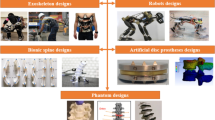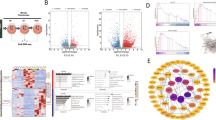Synopsis
A new micro-method was used to study the degradation of the intercellular matrix of rat xiphoid cartilage. It involved the use of cryostat-cut, unfixed sections in micro-incubation chambers on microscope slides and an analysis of their stainability with Toluidine Blue by microdensitometry. A purified lysosomal preparation isolated from a transplantable malignant tumour of the rat (Guerin T8) was found to be capable of causing matrix degradation in addition to that produced by the activity of endogenous cartilage enzymes. This exogenous activity was time, temperature and pH dependent: activity was optimal in the region of pH 5 but appreciable activity was also observed at pH 6 and pH 7. An antiserum to the lysosomal preparation inhibited endogenous degradation and degradation produced by the tumour's lysosomes. The significance of these findings is discussed in relation to invasive tumour growth, which is thought to involve the extracellular destructive activity of these enzymes.
Similar content being viewed by others
References
Ali, S. Y. (1964). The degradation of cartilage matrix by an intracellular protease.Biochem. J. 93, 611–18.
Barland, P., Janis, R. &Sandson, J. (1966). Immunofluorescent studies of human articular cartilage.Ann. rheum. Dis. 25, 156–63.
Barrett, A. J. (1968). Cartilage. InComprehensive Biochemistry (eds. M. Florkin and E. H. Stotz), pp. 425–74. Amsterdam: Elsevier.
Barrett, A. J. (1969). Cathepsins in pathology: an immunoenzymic study.Biochem. J. 115, 36–7P.
Beaufay, H., Jacques, P., Baudhuin, P., Sellinger, O. Z., Berthet, J. &De Duve, C. (1964). Tissue fractionation studies. 18. Resolution of mitochondrial fractions from rat liver into three distinct populations of cytoplasmic particles by means of density equilibration in various gradients.Biochem. J. 92, 184–205.
Burgess, E. A. &Sylvén, B. (1962). Glucose, lactate and lactic dehydrogenase activity in normal interstitial fluid and that of solid mouse tumours.Cancer Res. 22, 581–8.
Dingle, J. T. (1962). Lysosomal enzymes and the degradation of cartilage matrix.Proc. R. Soc. Med. 55, 109–11.
Dingle, J. T. (1966). The role of lysosomes in connective tissue disease. InModern Trends in Rheumatology (ed. A. G. S. Hill), pp. 110–20. London: Butterworths.
Dingle, J. T. (1970). The immuno-inhibition of cathepsin D-mediated degradation of skeletal tissues. InTissue Proteinases (eds. A. J. Barrett and J. T. Dingle). Amsterdam: North Holland. In press.
De Duve, C. (1959). Lysosomes, a new group of cytoplasmic particles. InSubcellular Particles (ed. T. Hayashi), pp. 128–59. New York: Ronald Press.
Gullino, P. M., Clark, S. H. &Grantham, F. H. (1964). The interstitial fluid of solid tumours.Cancer Res. 24, 780–97.
Holmberg, B. (1961). On thein vitro release of cytoplasmic enzymes from ascites tumour cells as compared with strain L cells.Cancer Res. 21, 1386–93.
Lucy, J. A., Dingle, J. T. &Fell, H. B. (1961). Studies on the mode of action of excess vitamin A. 2. A possible role of intracellular proteases in the degradation of cartilage matrix.Biochem. J. 79, 500–8.
Poole, A. R. (1970a). Invasion of cartilage by an experimental rat tumour.Cancer Res. 30, in press.
Poole, A. R. (1970b). The relationship between Toluidine Blue staining and hexuronic acid content of cartilage matrix.Histochem. J. 2, 425–30.
Poole, A. R. (1970c). The locations of cathepsin activity and β-glucuronidase in the Gruerin T8 tumour.Biochem. J. 118, 543–9.
Poole, A. R. &Williams, D. C. (1967).In vivo effect of an invasive malignant rat tumour on cartilage.Nature, Lond. 214, 1342–3.
Poole, A. R. &Williams, D. C. (1968). The role of lysosomal enzymes in malignant growth.Biochem. J. 110, 6–7P.
Sylvén, B. (1967). Some factors relating to the invasiveness and destructiveness of solid malignant tumours. InUn. int. Cancr. Monogr. Ser. no. 6: Mechanisms of Invasion in Cancer (ed. P. Denoix), pp. 47–60. Berlin: Springer-Verlag.
Sylvén, B. (1968). Lysosomal activity in the interstitial fluid of solid mouse tumour transplants.Europ. J. Cancer 4, 463–74.
Trouet, A. (1969). Caractéristiques et propiétés antigéniques des lysosomes du foie.Thesis: Université Catholique de Louvaine and Rockefeller University, New York.
Vaes, G. &Jacques, P. (1965). The assay of acid hydrolases and other enzymes in bone tissue.Biochem. J. 97, 380–8.
Weston, P. D. (1969). A specific antiserum to lysosomal cathepsin D.Immunology 17, 421–8.
Weston, P. D., Barrett, A. J. &Dingle, J. T. (1969). Specific inhibition of cartilage breakdown.Nature, Lond. 222, 285–6.
Williams, D. C. (1965). The transplantation of chemically induced steroid sensitive mammary tumours.Europ. J. Cancer 1, 115–21.
Author information
Authors and Affiliations
Rights and permissions
About this article
Cite this article
Poole, A.R. The degradation of cartilage matrix by a lysosomal preparation, isolated from a malignant tumour, and its inhibition by an antiserum to this preparation. Histochem J 2, 431–439 (1970). https://doi.org/10.1007/BF01004724
Received:
Issue Date:
DOI: https://doi.org/10.1007/BF01004724




